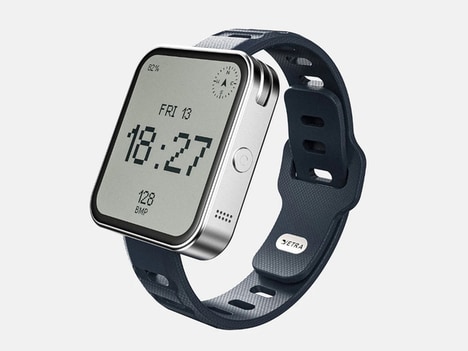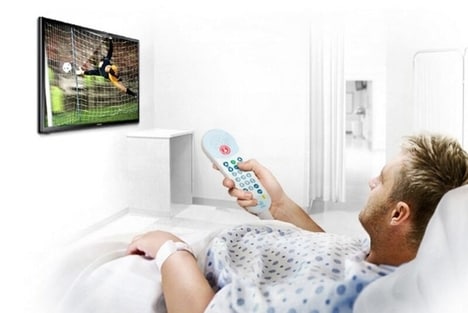Wearable Tech in Healthcare
Related Trend Reports
AI, Babies, Boomers, Gadgets, Health, Life Stages, Lifestyle, Mobile, Multimedia, Seniors
The healthcare industry stands at an inflection point. While traditional medicine has long operated on a reactive model—treat symptoms after they appear—a new paradigm is emerging that prioritizes prevention over intervention. At the center of this transformation are wearable devices that have evolved far beyond simple fitness trackers into sophisticated health monitoring systems capable of detecting irregularities before they manifest as symptoms.
For business leaders tracking innovation opportunities, this shift represents more than a technological advancement. It signals a fundamental restructuring of how we approach wellness, creating substantial market opportunities for companies positioned to capitalize on this transition.
From Reactive to Predictive: The Healthcare Paradigm Shift
The conventional healthcare model operates like an emergency response system—problems are addressed after they occur. Wearable technology is inverting this approach by transforming our bodies into continuously monitored systems. Modern devices track sophisticated biometrics including heart rate variability, skin temperature fluctuations, and sleep pattern anomalies, creating early warning systems that flag potential health concerns before they require medical intervention.
This represents a fundamental shift from crisis management to proactive wellness maintenance. The implications extend far beyond individual health outcomes, creating opportunities for companies that can effectively interpret and act on these early warning signals.
AI-Powered Personalization: Beyond Basic Tracking
The next generation of wearable technology distinguishes itself not through additional sensors, but through intelligent software that transforms passive data collection into actionable health insights. Advanced AI algorithms analyze individual patterns and trends, delivering personalized recommendations that move beyond generic wellness advice.
Instead of broad suggestions like "increase physical activity," these systems provide targeted interventions based on personal health patterns—recommending stress reduction techniques after detecting elevated cortisol markers or suggesting sleep optimization strategies based on recovery metrics. This evolution from generic tracking to personalized coaching creates significant opportunities for companies developing intelligent health software platforms.
Clinical Research Gets a Digital Overhaul
The clinical research industry is experiencing a technology-driven transformation, with wearables serving as the primary catalyst. Traditional clinical trials, which require frequent in-person visits and controlled laboratory environments, are being replaced by remote monitoring systems that track participants in real-world settings.
This shift offers multiple advantages: reduced costs, faster data collection, and more inclusive participant pools. The challenge lies in managing and validating the massive datasets these devices generate. Companies that can provide robust infrastructure for clinical-grade data collection, analysis, and validation are positioned to become essential partners in next-generation medical research.
Corporate Wellness Programs Embrace Smart Monitoring
Forward-thinking companies recognize the connection between employee health and business performance. Progressive organizations are integrating wearable technology into workplace wellness initiatives, using real-time health data to optimize employee well-being and productivity.
With appropriate privacy safeguards, aggregated health insights enable HR teams to identify burnout risks, optimize work schedules, and implement targeted wellness interventions. This creates opportunities for innovators to develop enterprise-grade health monitoring platforms that balance individual privacy with organizational health insights.
Expanding Beyond Traditional Form Factors
The wearables market is diversifying beyond smartwatches into innovative form factors that address specific use cases. Smart textiles, biosensing earbuds, and adhesive health patches are unlocking applications for previously underserved markets including industrial workers, elderly populations, and professional athletes.
These specialized devices address unique requirements that traditional wearables cannot meet, creating niche opportunities for companies willing to develop targeted solutions for specific user groups.
The Integration Imperative: Connecting Health Ecosystems
Perhaps the greatest opportunity lies in solving the data integration challenge. Wearable devices generate substantial health data, but much of it remains isolated within proprietary systems. The market needs connective infrastructure—APIs and platforms that enable seamless data flow between wearables, electronic health records, insurance systems, and wellness applications.
Companies that successfully create this integration layer will become critical infrastructure for the emerging personalized healthcare ecosystem.
Strategic Recommendations for Innovation Leaders
- Focus on Software and Services: With established players dominating hardware manufacturing, the greatest opportunities exist in developing valuable software solutions and service platforms.
- Design for Ecosystem Integration: Successful solutions must integrate seamlessly with existing healthcare infrastructure, from provider systems to insurance platforms.
- Prioritize Trust and Transparency: In an era of increasing data privacy concerns, companies that lead with transparent data practices and robust security measures will earn competitive advantages.
- Pursue Vertical Specialization: Focused solutions for specific conditions—pregnancy monitoring, chronic disease management, or mental health tracking—offer clearer differentiation opportunities than broad-market approaches.
The Innovation Opportunity
Wearable technology is transitioning from consumer novelty to essential healthcare infrastructure. This transformation creates substantial opportunities for companies that can develop meaningful solutions addressing real healthcare challenges. The shift toward preventative, personalized care is accelerating, and the companies that move decisively to build the supporting infrastructure will define the next era of health innovation.
The question for innovation leaders is not whether this transformation will occur, but whether their organizations are positioned to capture the opportunities it creates.
For more industry insights, check out Trend Hunter's free 2025 Trend Report.


